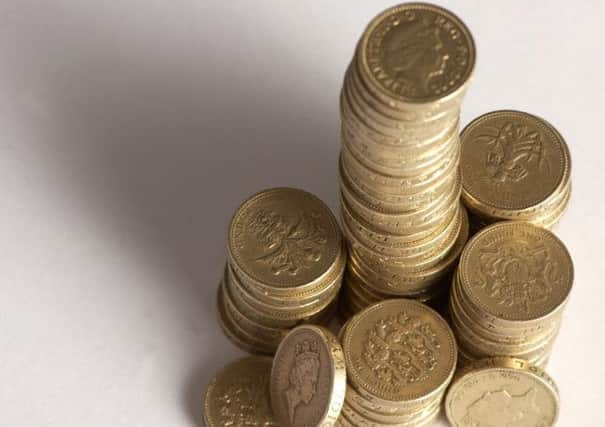Ronald MacDonald: The Currency Case for No


With only a few weeks to go until the Scottish referendum on independence, the people of Scotland are still unclear as to what currency they will be using for everyday transactions and in what currency their assets and liabilities will be denominated if there is a Yes vote. Furthermore, since the currency regime associated with the choice of currency (that is, whether the currency floats or is fixed against other currencies) can have a profound effect on a country’s inflation, competitiveness, employment and output it is surely incumbent on the First Minister of Scotland to tell the people of Scotland what his Plan B is?
The Plan A of the Nationalists involves staying in a sterling monetary union post-independence. An alternative take on this is to say that they prefer a rigidly fixed exchange rate between an implicit Scottish pound and the pound sterling, with a one-to-one parity. The economic rationale for continuing with such a fixed rate relationship is based on the so-called optimal currency area criteria, which in turn essentially relies on the convergence of economic indicators, such as productivity and GDP growth, across participants of the currency union. Although such criteria would seem to be met at the moment they will not be met post-independence both for endogenous reasons, which are the inevitable consequence of independence, and also because it is the express objective of the Nationalists to make these indicators change.
Advertisement
Hide AdAdvertisement
Hide AdHowever, it is widely accepted by specialists in exchange rate economics that these kinds of effects have profound and systematic effects on a country’s competitiveness or its real exchange rate. Furthermore, if an independent Scotland were to gain the geographic share of North Sea oil it would become a net exporter of hydrocarbons and the rest of the UK would become a net importer. This would mean the two areas would suffer asymmetric shocks and that is another fundamental source of divergence and driver of a country’s competitiveness.
I am unaware of any effective proposal from the SNP as to how these effects would be handled in a monetary union in which the exchange rate is fixed and therefore cannot be used to handle underlying competitiveness changes.
The economics of currencies therefore clearly indicates that Plan A is not a viable option for an independent Scotland and any attempt to impose such will unravel pretty quickly at great cost to all participants – a eurozone monetary union would suffer from similar and additional issues.
Other lesser forms of sterlingisation have been touted as alternatives to a formal sterling monetary union. For example, the slogan “it is as much our pound as theirs” has been used many times during the referendum debate to justify adopting sterling anyway as the currency of an independent Scotland. Or a currency board could be set up in which local Scots pounds, issued by a Scottish monetary authority but backed at least 100 per cent by sterling, would be freely converted on a one-to-one basis with Bank of England notes.
However, these alternative forms of sterlingisation are also effectively fixed exchange rate regimes, with a parity of one-to-one, and therefore suffer from all of the deficiencies of a formal sterling monetary zone, plus many others such as having no lender of last resort function.
As Nobel laureate Paul Krugman and others have noted, history is replete with the disastrous consequences of countries trying to defend fixed exchange rates with one-to-one parities when their underlying competitiveness was changing.
For example, in 2001 Argentina began a default process on the massive debt generated to defend its one-to-one fixed parity with the US dollar and that costly process is still unravelling today, 13 years later. The initial default pushed Argentina into a steep recession combined with a 100 per cent inflation rate. Since that period, Argentina, once one of the wealthiest countries in the world, has been locked out of international bond markets and recently suffered a second default on the payment of restructured debt from the initial default.
This therefore leaves an independent currency with an independent central bank as the only tenable plan B option for an independent Scotland. With very limited foreign exchange reserves to start with, the currency would need to float on exchange markets. However, floating exchange rates are highly volatile and uncertain, imparting exchange risk and an extra layer of transaction costs into international transactions. For a country at Scotland’s high level of development, and with the channels of financial and economic linkages it has with the rest of the UK, this is clearly not an attractive prospect.
Advertisement
Hide AdAdvertisement
Hide AdTo attenuate such volatility, interest rates would need to be set above Scotland’s competitor’s rates, while an austerity programme of expenditure cuts and tax rises would be needed to generate a fiscal surplus in order to generate sufficient foreign exchange reserves for the longer-term management of the currency.
Since a separate currency is clearly the only tenable plan B, and since the negative consequences of such a plan for a country with the sophisticated economic linkages Scotland has are likely to be generational in their effects, the people of Scotland surely deserve a properly worked through cost-benefit analysis on the currency issue.
Indeed, unless the benefits of such a regime are clearly shown to outweigh the costs, or in the absence of such an analysis, the current sterling monetary and political union is the only viable currency arrangement for Scotland.
• Professor Ronald MacDonald holds the Adam Smith Chair of Political Economy at the University of Glasgow